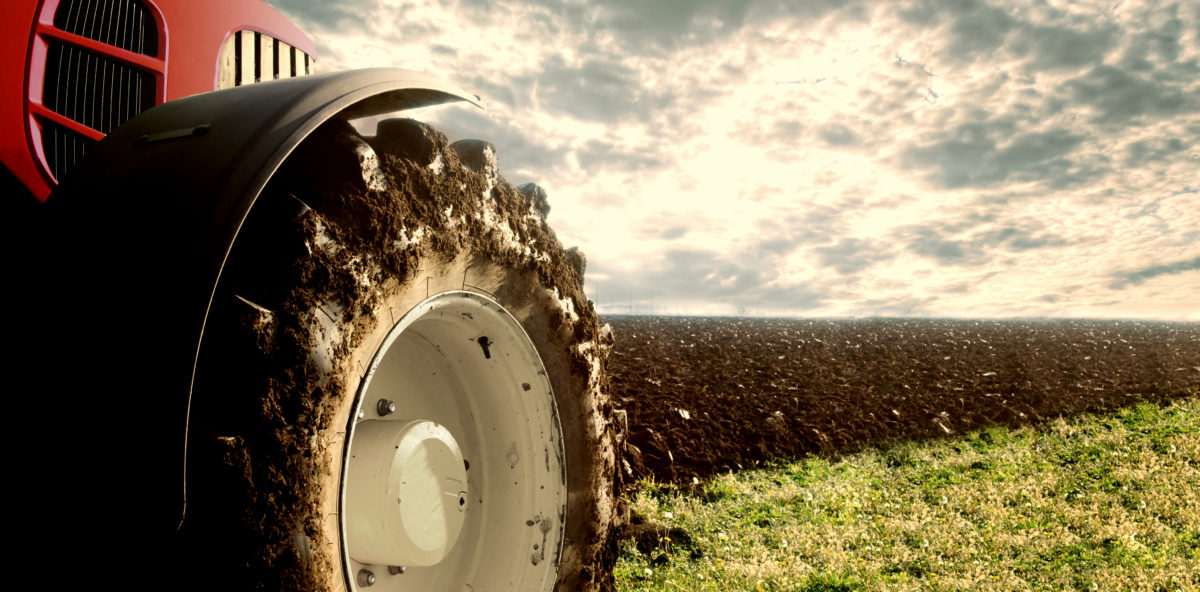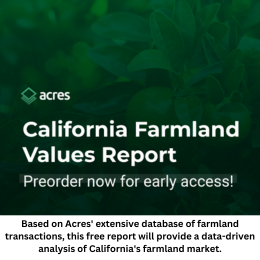February 26, 2020
By Jeanae DuBois, Director of Growth Marketing, Shift3 Technologies
The U.S. agriculture industry continues to shift towards fewer, but larger, farming operations. That said, smaller farms continue to play a major role in U.S. food production. In 2015, 90 percent of U.S. farms were considered small family operations with less than $350,000 in annual Gross Cash Farm Income (GCFI). When you consider that there are approximately 671,000 farmers managing small acreage farms vs. 46,000 farmers managing large farms, the importance of these smaller farms on the overall industry is clear.
To be specific, smaller family farms account for an estimated 99 percent of all U.S. farms and 89 percent of production. They accounted for 24 percent of the value of production, while large farms (with at least $1 million in GCFI) are only 2.9 percent of U.S. farms, but account for 42 percent of the value of production. How can smaller farms sustain their operations and do more with the acreage that they have?
According to estimates, after land costs, machinery and technology are the most expensive component of farming. All industries are experiencing digital transformation, but for the agriculture industry custom-built technology solutions may be a counterintuitive way to reduce operating costs.
Off-the-shelf solutions are made with large farms in mind, and with each parcel being unique, what works for one farm may not work on yours. When a small farm has a problem that could be solved with technology, they might not know where to start. Having something custom made for your small farm may seem unrealistic, but there are plenty of examples of technology providing ROI.
Some of the most common custom technologies that small farms are utilizing today focus on fixing common problems such as:
Machinery
Most conventional sprayers apply chemicals uniformly, regardless of where—or if—weeds are present. This approach wastes compounds while also increasing costs, crop damage risk, pest resistance to chemicals, environmental pollution, and contamination of products. Some of the largest names in agriculture have launched computer vision-enabled tractors and sprayers but that doesn’t mean you have to invest in all new equipment to take advantage of see-and-spray technology. There are now low-cost options that have been proven effective and deliver serious benefits for row crop farms. For example, recently a team built an AI-enabled, computer vision sprayer from scratch and the whole system was composed of low-cost and accessible components, with a total of less than $1,500. You don’t need to build something this advanced yourself, but rather look for custom software development shops to help you design something that perfectly addresses your needs.
Computer Vision
Speaking of computer vision, there are other places within the small farm production process that low-cost cameras can be deployed to make a big impact on costs. Visual inspection of produce by humans on a packaging line is costly and digital inspections have been shown to increase speed, efficiency and yields. Machines enabled with computer vision have come down dramatically in price over the past few years, but one thing holding back large-scale adoption is the need for calibration and fine tuning for each potential use case. Again, custom software may have the advantage small farms need to take advantage of this technology. By getting something designed for your crop, facility, and needs, small farms working with the right partners who know how to troubleshoot will come out ahead with computer vision for produce inspection.
Data Analytics
Big data provides farmers with specialized data on everything from rainfall, fertilizer application, crop health, and more. Having access to this type of information in one dashboard enables farmers to make better decisions on how to maintain crop health and increase profitability during harvest. Data analytics may sound like something out of a small farm’s reach, but knowing exactly what your land is doing at all times may be the glue that binds together the benefits of all other farming technologies. Having the data in real-time helps small farms make smart decisions with their resources. According to the Stanford GSB team’s research, a survey of American farmers who used precision technology reported average cost reductions of 15 percent and a 13 percent increase in yields.
Every farm is unique in how they try to combat the challenges of the 21st century, but custom designed software should not be overlooked as a possible solution. When deciding where to invest, look for a technology developer with whom you feel comfortable. There may not be a software development shop in your area that specializes in agriculture, but if they are building software solutions for other businesses, they may be able to create exactly what you need for your organization.
According to a Food and Agriculture Organization of the United Nations (FAO) report, by 2050 the world’s population will reach over nine billion. With a population growth at 34 percent higher, there is a lot on the line for farmers looking to expand to fill the need. The best way to fill that need is by embracing new technology that works for your farm. Goldman Sachs estimates that new technologies allow for 70 percent higher yields on the existing agricultural land. Adopting customized technology doesn’t mean that your vision for your business has to change. Technology can help you meet your goals, possibly increase your yields, cut down on costs, and streamline complicated processes.
DISCLAIMER
All views, data, opinions and declarations expressed are solely those of the author(s) and not of Global AgInvesting, GAI News, GAI Gazette, or parent company HighQuest Partners.

Let GAI News inform your engagement in the agriculture sector.
GAI News provides crucial and timely news and insight to help you stay ahead of critical agricultural trends through free delivery of two weekly newsletters, Ag Investing Weekly and AgTech Intel.




